How to build your own studio in 11 easy steps
From soundproofing to floating floors…
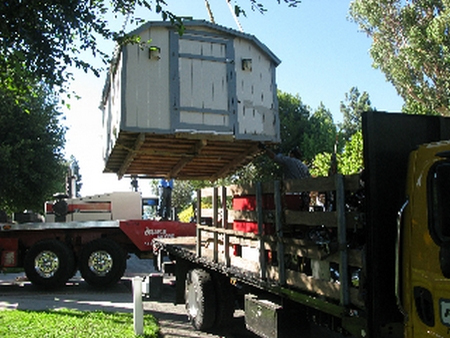
Thanks to constant advancements in digital technology, everyone can record at home, and everyone can own a studio. But while many settle for an eggbox-clad bedroom setup (a myth we'll debunk later), there is another way…
Build your own professional-quality recording studio. Yes, it's a Mohammed-style mountain to move and will require a sizeable investment of both time and money (and plasterboard) but the results could be priceless.
So, here are the 11 most-important factors to consider when building your own studio. From soundproofing to floating floors to, er... breathing.

1. Location, location, location
The first consideration when contemplating building a studio is where to build it. At this stage it's important to consider just how loud you're going to be (especially your drum kit) and how viable soundproofing is for your situation.
For example, converting a garage in your garden will probably leave a decent amount of space inside after soundproofing, with minimal noise escaping. However, a room in a house or flat may be impossible to soundproof completely and leave you unreasonably cramped after doing so.

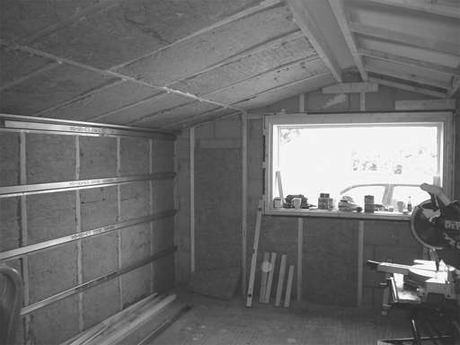
2. Let in the light
Daylight is such an important ingredient when it comes to creating a nice place to work in, and a lack of it can make your workplace feel like a prison cell. It's easy to assume that blocking up windows is the only option when soundproofing a room, yet a combination of a single double glazed unit with no opening windows and a sheet of acoustic glass (comprising of two sheets of glass with a thinner sheet glued inbetween) will work incredibly well if installed and sealed correctly.

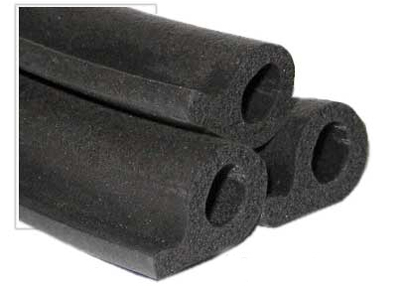
3. Close (and seal) the doors
Your studio will have at least one doorway to contend with and, like the window, this is another potential area for sound leakage. Simply using a heavy door can help, though adding weight by building a regular door up or applying a layer of Sheetblok (a special vinyl material designed to act as an effective sound isolation barrier) can have the same effect.
Want all the hottest music and gear news, reviews, deals, features and more, direct to your inbox? Sign up here.
Make sure each door seals completely when shut - regular sealing strips are available from DIY stores, but there are sets commercially available specifically for this purpose.
4. Don't forget to breath
With all of the windows and doors sealed and walls caulked and airtight, there is the small issue of how you're going to breathe. Surprisingly easily overlooked, the supply of air into the studio is important, not only to avoid lapsing into unconsciousness mid-paradiddle, but also for the preservation of the recording equipment, on which moisture can collect.
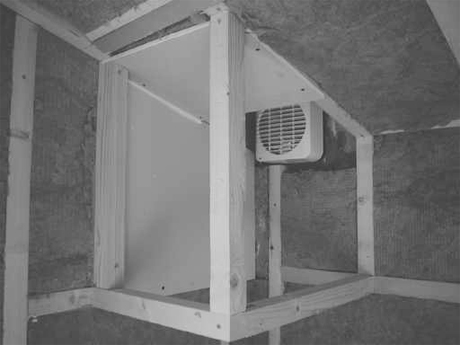
You'll need both an inlet and an outlet (one with a fan), spaced evenly apart of possible.

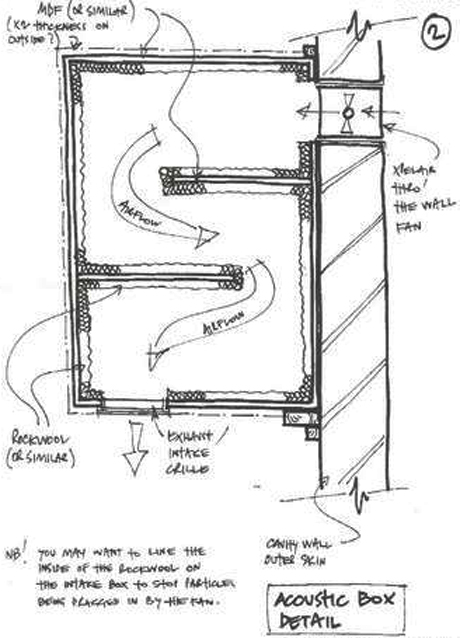
5. Build an acoustic box (hello, MDF)
In creating these air vents you'll now have a hole in your soundproofing that will need an acoustic box built over it, one of which will house the fan. Make an 'S' shape duct within an MDF (or equivalent) box, line with acoustic foam and place over the vent holes along with some mesh to keep out unwanted crawly things.
One final consideration is to avoid putting the inlet vent where the sun shines, so to speak, as it will pull in unwanted hot air during the summer.

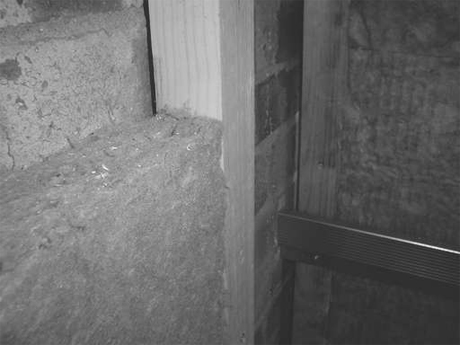
6. Create a room within a room (the difficult bit)
Most soundproofing is done with the 'room within a room' principle in mind: construct a separate room within the original building with minimal contact. If space allows, run a new wall of high-density concrete blocks internally, mounted on thin neoprene (a type of synthetic rubber compound) so that the blocks are not directly on the floor.
Tie them to the outer walls using acoustic wall ties and, once you have soundproofed the original roof using mineral wool placed between the beams and a couple of layers of plasterboard mounted on resilient channel, do the same thing again on a second roof mounted to the new internal wall.
These internal walls can then have 2x2 timber attached vertically, again mounted on neoprene, and after pushing in 2" thick mineral wool inbetween the studs, our two layers of plasterboard can be fitted onto resilient channel. Finally (phew!), all surfaces should be sealed with decorators caulk - a small hole in the surface, which can be caused by cracks around the surface of a wall, can compromise its efficiency by up to 50 percent.

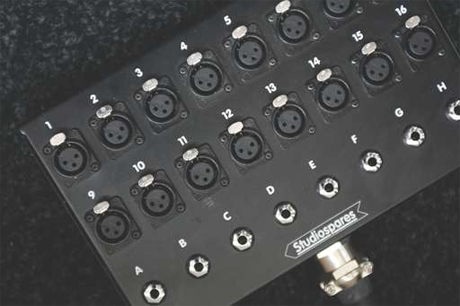
7. Don't hide the power
It's often assumed that power and lighting cables should be run behind the new plasterboard walls. However, cutting out plug sockets will destroy your carefully built soundproofing. Instead it's recommended that all power is surface mounted using conduit or trunking, or you could build out another area for light, plugs and power using timber and plasterboard.
8. Use floating floors (another difficult bit)
In essence, this is the same as we've done to the walls: decoupling two surfaces to prevent vibration being carried across. To float a floor, wooden beams can be placed on rubber U-Boat supports at regular intervals and, with neoprene strips inbetween, a chipboard floor can be screwed on top.
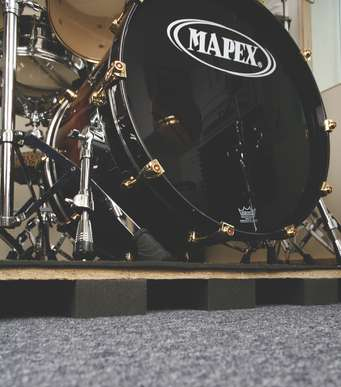
A much simpler and cheaper solution is to use PlatFoam to raise separate pieces of kit off the ground. PlatFoam comes in the form of long 3"x2" strips of high density foam which can be laid a few inches apart with a sheet of plywood placed on top to create a floating riser.

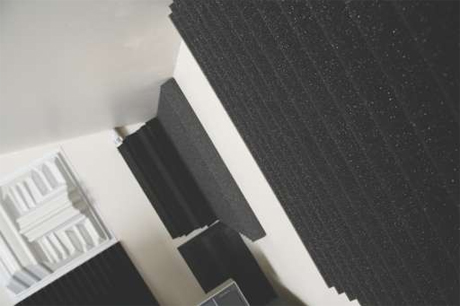
9. Tune the room (absorption and diffusion)
You may well find that the reflective properties of the plasterboard make for a rather unpleasant and harsh-sounding room, which is not really what you want if you're going to be recording in there, and certainly not what you want if you're going to be monitoring and mixing in there either.
Recommended budget:
Windows £300
Fan £100-300
Air Conditioner £300-500
PlatFoam £175 per 8'x8' riser
Resilient Strip £4 per 3m
Acoustic Mineral Wool £35 per pack
Aurelex room kit £250 upwards
Simply having the room carpeted and putting a sofa at one end will probably help, but to address the wall reflection you can use a combination of two solutions: absorption and diffusion.
Diffusion involves sending the reflections off in different directions, breaking up the sound, while absorption soaks up certain unwanted frequencies. This is where the old eggbox myth can be laid to rest - while their shape should make them potentially good sound diffusers, their material isn't reflective enough, and its absorptive properties are minimal too. They don't look very nice either!
So, try picking up some 2'x4' sheets of hardboard and make yourself some absorption panels using 1" slabs of mineral wool (the same size) placed over the top and a dustsheet laid over and tightly stapled from behind. They'll look better and, more importantly, will actually work when hung on opposite walls.
If you'd prefer to invest in something ready made for the job, try some Aurelex, ProFoam or similar. These companies make a range of products for studios and even make room packs with all the different elements you'll need for different sized rooms. As you'd expect, this comes at a price, but gives professional results both sonically and visually.


10. One room or two?
If this soundproof space is to be used as a recording studio as well as a practice room, your next consideration is whether to go for a one-room studio or to have a separate control room. It may seem obvious that a recording studio needs two rooms, one to record in and one to listen back in, but for some musicians it can sometimes be easier to work in the same room as the equipment.
One compromise in this situation is running a second computer monitor into the live room and using a wireless keyboard and mouse to control things. This way each room can be tuned to it's optimum potential.


11. Remember: Rome wasn't built in a day
Building a studio can be a time-consuming process and you'll no doubt encounter setbacks along the way. As a result it can be frustrating as the time ticks by and costs add up, but try not to lose sight of the fact that once it's complete, the space is yours to create your own studio environment in.
You'll be free to play when you want without disturbing anyone and you can be as creative as you like. That's got be worth the effort hasn't it?